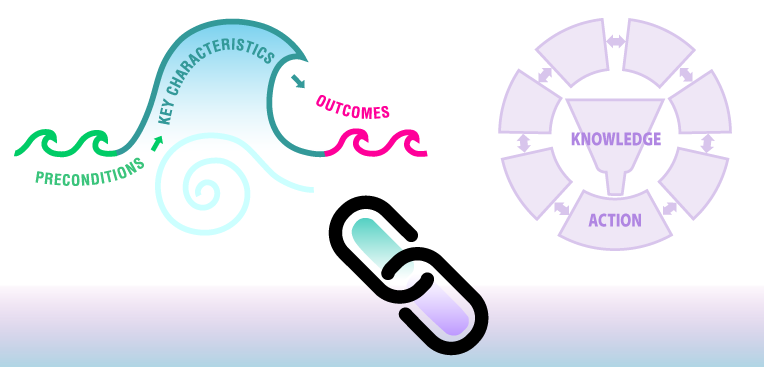

Linking this key characteristic to other elements of the Social Movement Action Framework:
Each of the elements of the Social Movement Action (SMA) Framework is dynamic and interrelated. For example, intrinsic motivation reflects the values that underlie a shared concern or desired change and an urgent need for change. The shared values can be used in positioning key messages or framing of the social movement. When individuals engage in social movements willingly, it fosters emerging leaders. The positive emotional experiences increase the commitment to engage in individual and collective action that supports the development of a collective identity.
Linking this key characteristic to the action cycle phases of the Knowledge-to-Action Framework:
You and your change team’s capacity in social movement actions may be enhanced and/or accelerated by the addition of some of the action cycle phases of the Knowledge-to-Action (KTA) Framework, as the two frameworks are complementary. In addition to the linking example described earlier in this section, there can be many other points of connection between the two frameworks. Below are two more examples for your consideration:
- Adapt knowledge to local context: Intrinsically motivated individuals can reside in various contexts, take on different roles, and can have access to varying levels and types of resources. Assessing the local context, stakeholders and resources can help you understand their story and why they are intrinsically motivated. Intrinsic motivation builds leadership, invested energy and commitment to the movement.
- Assess barriers and facilitators to knowledge use: Even the most intrinsically motivated individuals can be discouraged and hindered when there are barriers that limit them from mobilizing individual and collective action. Assessing facilitators and barriers can help you and your change team leverage facilitators and circumvent/minimize barriers that arise. For example, positive social experiences of affiliation and togetherness may increase change agents’ existing commitment to the movement. This is one facilitator of the social movement, which others can you identify?
For more discussion about the dynamic links between the elements of the SMA Framework to one another and to the KTA Framework, see the section ‘Accelerating your success with the Leading Change Toolkit™’.
